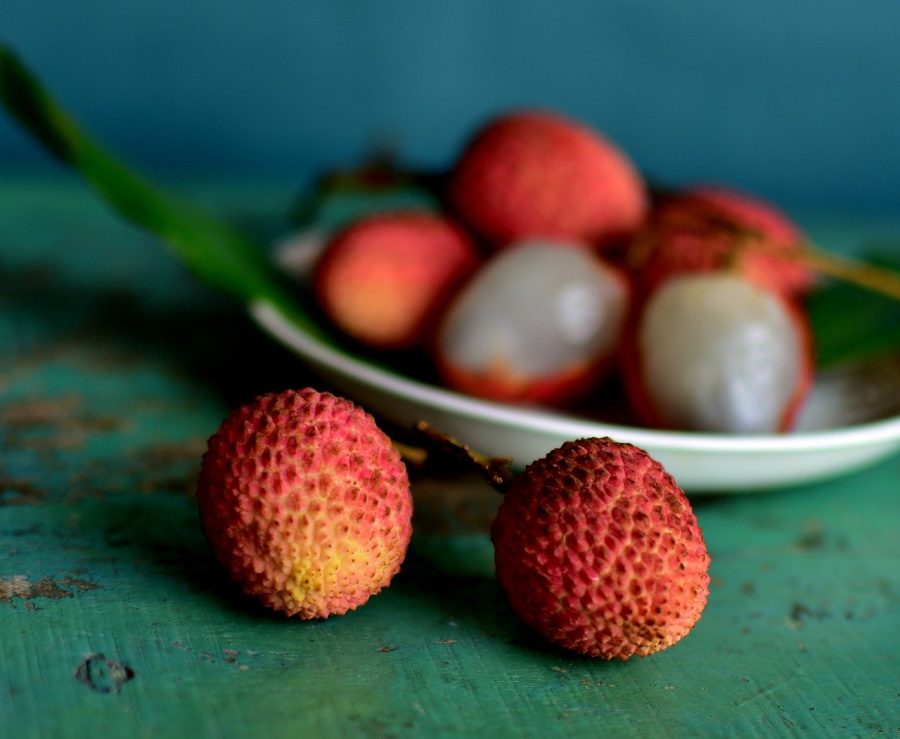What is Lychee?
December 11, 2021
Lychee. It’s the juicy, pearl-fleshed fruit that makes it into the cups of jelly we all adore. While most of us can recognize the fruit in its jello form, very few have seen, let alone eaten, the fruit as a whole. Where does this elusive fruit originate? And how does it end up in our delicious snacks?
The lychee fruit can be obtained from the Litchi chinensis, a type of soapberry tree that is native to regions of Southern China. The evergreen plant thrives in tropical and subtropical climates, and can now be found farmed in parts of Florida, Hawaii, and India. In early spring, the tree pushes out bushels of unusual flowers. The lychee blooms are unlike typical flowers. They lack decorative petals and have stamens, pollen-bearing organs, that stick out like otherworldly antennae. Once pollinated, the base of these flowers swell slightly and begin the process of becoming fruit.
Initially, the fruiting body starts off green. But as time goes on, the lumpy exterior turns a blush red. Once ripe, the fruit is ready to be picked and eaten. At first glance, lychees appear dry and inedible with their sandpaper textured skin. But peel back the layer of corrugated cardstock and one may reveal the juicy, wobbling meat inside.
“I peel the spiky stuff off first,” said sophomore Samantha Leung. “You have to avoid choking on the seed.”
The flavor and texture of the fruit is quite unique. The flesh is soft yet attains a bounciness. Its taste is sometimes compared to the cross of grape and rose. Like Leung says, a marble-sized pit sits at the center of the translucent flesh. Aside from being a choking hazard, lychee pits are relatively harmless. In the event that one does swallow the lychee seed, it should just pass through.
Back to the beloved lychee jellies: why does it bear the name of the lychee fruit? Once picked and processed, some lychee fruits are strained into a sweetened syrup. The sugary liquid is mixed with thickeners, such as seaweed extract, and cubes of nata de coco (fermented coconut water) are added for extra texture. That’s right, those chewy, opaque blocks aren’t even lychee. In fact, there is virtually no actual lychee inside the jellies altogether.
However, if this article has inspired you to get your hands on this exotic fruit, go right ahead. They can be found at local Asian markets, typically sold in red mesh bags. I promise fresh lychee does not disappoint.
Photographic Courtesy of PIXABAY.COM

